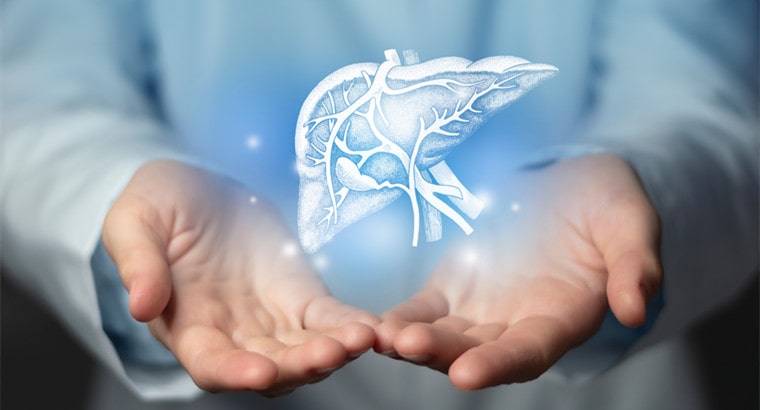Introduction
Non-alcoholic fatty liver disease (NAFLD) is a growing public health concern affecting millions of people worldwide. It is a major cause of liver-related morbidity and mortality, and its prevalence has been increasing at an alarming rate.
In this article, we will discuss the role of sugar in the development of NAFLD, delve into the mechanisms behind its damaging effects on the liver, and explore ways to prevent and manage this condition. We will also answer the crucial question: what foods can damage your liver?
What is Non-Alcoholic Fatty Liver Disease?
Non-alcoholic fatty liver disease is a spectrum of liver conditions that occur in people who consume little to no alcohol. It is characterized by the accumulation of excess fat in the liver, leading to inflammation and, in severe cases, liver cirrhosis and liver failure.
The spectrum of NAFLD ranges from simple steatosis (fat accumulation without inflammation) to non-alcoholic steatohepatitis (NASH), which involves liver inflammation and cell damage.
The Role of Sugar in Non-Alcoholic Fatty Liver Disease
One of the primary factors contributing to the development of NAFLD is the overconsumption of sugar, particularly fructose, which is found in various forms such as high-fructose corn syrup (HFCS) and table sugar (sucrose).
Fructose consumption has increased dramatically over the past few decades, mainly due to its widespread use in processed foods and sweetened beverages. This increase in fructose intake is believed to be a major driver of the current NAFLD epidemic.
How Sugar Affects the Liver
When we consume fructose, it is primarily metabolized in the liver. In moderate amounts, this is not a problem.
However, when consumed in excess, fructose can overwhelm the liver’s metabolic capacity, leading to the accumulation of fat within liver cells. This fat accumulation can, in turn, trigger inflammation and oxidative stress, causing liver damage and progressing to more severe forms of NAFLD.
Several mechanisms are involved in fructose-induced liver injury:
- De novo lipogenesis: Excess fructose is converted into fat through a process called de novo lipogenesis, leading to increased fat storage in the liver.
- Increased uric acid production: Fructose metabolism also generates uric acid, which can contribute to inflammation and oxidative stress in the liver.
- Altered gut microbiota: High fructose intake can disrupt the balance of gut bacteria, leading to increased gut permeability and the release of inflammatory substances that can damage the liver.
Recognizing the Risks: What Foods Can Damage Your Liver?
It is crucial to recognize the dietary sources of sugar that can contribute to NAFLD. Many processed foods and beverages contain large amounts of added sugars, particularly in the form of high-fructose corn syrup. These include:
- Soft drinks and fruit juices
- Candy and chocolate bars
- Baked goods such as cakes, cookies, and pastries
- Breakfast cereals and granola bars
- Flavored yogurts and other sweetened dairy products
- Salad dressings and condiments
To minimize the risk of developing NAFLD, it is essential to limit the consumption of these foods and opt for whole, unprocessed foods that are naturally low in sugar.
The Impact of Genetics on Non-Alcoholic Fatty Liver Disease
Genetics can also play a role in the susceptibility to NAFLD. Research has identified several genes associated with an increased risk of developing non-alcoholic fatty liver disease.
Among these genes, the patatin-like phospholipase domain-containing protein 3 (PNPLA3) gene has been most consistently linked to NAFLD. Variants in this gene can lead to an increased susceptibility to liver fat accumulation, inflammation, and fibrosis.
It is essential to understand that while genetics can predispose an individual to NAFLD, lifestyle and dietary factors still play a significant role in the development and progression of the disease.
By adopting a healthy lifestyle and making informed dietary choices, individuals with a genetic predisposition to NAFLD can minimize their risk of developing the condition or reduce its severity.
The Socioeconomic and Environmental Factors Contributing to NAFLD
Socioeconomic and environmental factors can also contribute to the prevalence of non-alcoholic fatty liver disease. Lower socioeconomic status has been associated with a higher risk of NAFLD, likely due to limited access to healthy foods, healthcare, and opportunities for physical activity.
Environmental factors, such as exposure to endocrine-disrupting chemicals (EDCs), can also play a role in the development of NAFLD. EDCs are substances that can interfere with the body’s hormonal systems, leading to adverse health effects.
Some EDCs, such as bisphenol A (BPA) and phthalates, have been linked to an increased risk of NAFLD due to their potential effects on lipid metabolism and insulin resistance.
Addressing these socioeconomic and environmental factors through public health policies and community initiatives can help reduce the prevalence of NAFLD and promote liver health on a larger scale.
The Long-Term Consequences of Non-Alcoholic Fatty Liver Disease
If left untreated, non-alcoholic fatty liver disease can have severe long-term consequences on an individual’s health. In its advanced stages, NAFLD can progress to liver cirrhosis, a condition characterized by scarring and irreversible liver damage. Liver cirrhosis can lead to liver failure, requiring a liver transplant to save the individual’s life.
Additionally, NAFLD has been linked to an increased risk of developing hepatocellular carcinoma (HCC), a type of liver cancer. Early detection and management of NAFLD can help reduce the risk of these severe health consequences and improve the overall prognosis for individuals affected by the disease.
Prevention and Management of Non-Alcoholic Fatty Liver Disease
In addition to reducing sugar intake, several lifestyle changes can help prevent and manage NAFLD:
- Maintain a healthy weight: Obesity is a significant risk factor for NAFLD, so maintaining a healthy weight through a balanced diet and regular exercise is crucial.
- Consume a balanced diet, including Carnivore Snax: Focus on consuming a diet rich in fruits, vegetables, whole grains, lean proteins, and healthy fats to provide essential nutrients and minimize the risk of NAFLD.
- Exercise regularly: Engaging in regular physical activity can help reduce liver fat, improve insulin sensitivity, and prevent the progression of NAFLD.
- Limit alcohol consumption: Although NAFLD is associated with non-alcoholic factors, limiting alcohol intake can help reduce liver damage and lower the risk of disease progression.
- Control blood sugar levels: Maintaining healthy blood sugar levels through diet and, if necessary, medication can help prevent the development and progression of NAFLD in individuals with diabetes or insulin resistance.
Conclusion
In conclusion, the alarming impact of sugar on liver health and the rising prevalence of non-alcoholic fatty liver disease highlight the urgent need to address this public health issue.
By understanding the role of sugar in NAFLD, recognizing foods that damage your liver, and considering the influence of genetics, socioeconomic, and environmental factors, we can work together to raise awareness and develop targeted strategies to prevent and manage this condition.
Adopting a healthy lifestyle, making informed dietary choices, and addressing insulin resistance can help protect liver health and minimize the risk of NAFLD and its long-term consequences, including liver cirrhosis and liver cancer.
By taking a comprehensive approach to liver health, we can make a lasting impact on the lives of millions of people affected by non-alcoholic fatty liver disease.










